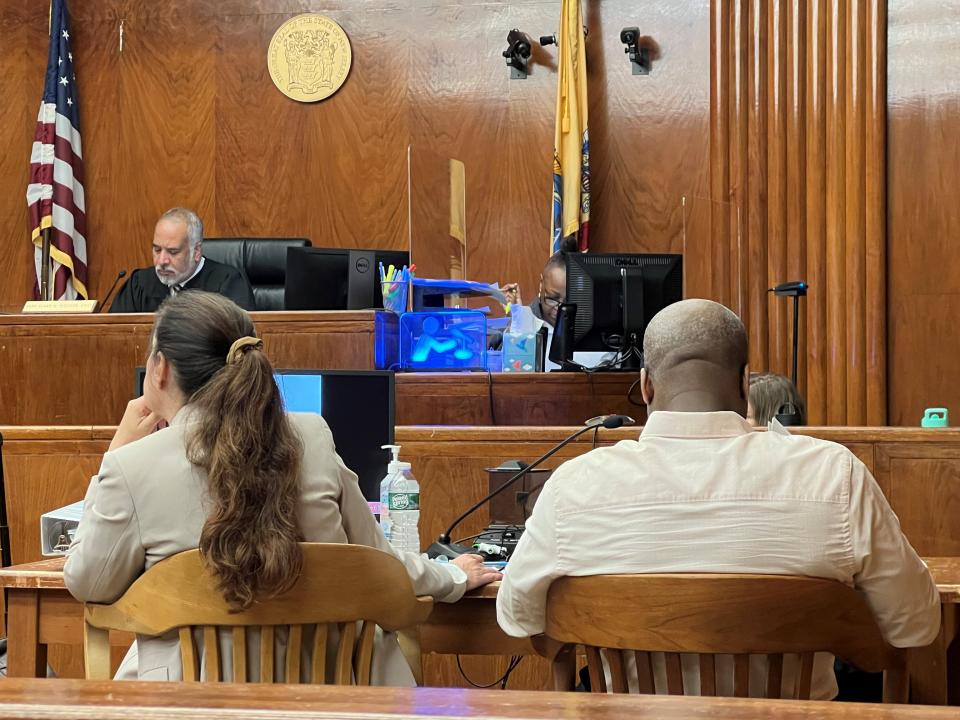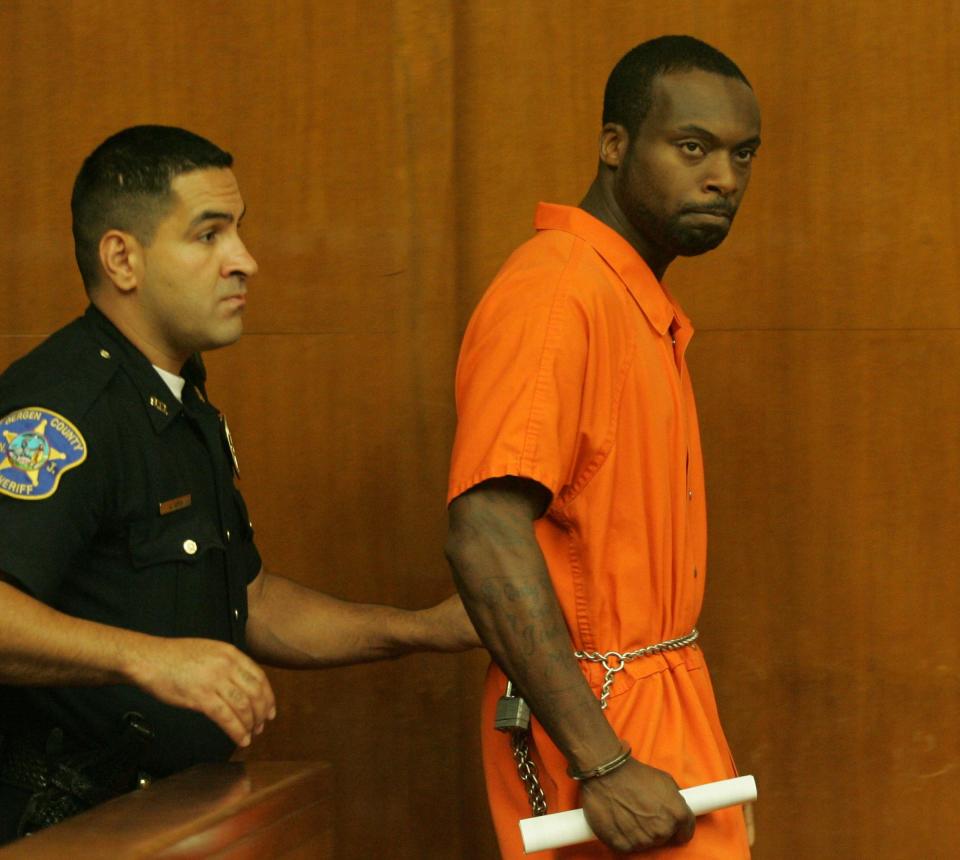Detective details discovery of victim's burned body during Randy Manning murder trial
Two detectives and a records custodian from AT&T were among the witnesses called on day three of the murder trial of Randy Manning on Tuesday.
Manning is accused of shooting Rhian "Kampane" Stoute and setting his body on fire in a vacant house in Englewood in August 2011. Stoute's badly burned body was found in the back of his black Chevy Tahoe on Village Circle in Paramus. The trial began on May 3 before state Superior Court Judge Gary Wilcox.
Manning was found guilty in 2014 of shooting Stoute and lighting his body on fire. He was sentenced to life in prison, but the conviction was tossed by an appellate court decision that was upheld by the state Supreme Court in 2020.
The Supreme Court ruled that the Bergen County Prosecutor's Office illegally skirted the requirement for a warrant before searching call records and location data on Manning's cellphone.
The day began with retired Bergen County Prosecutor's Office Detective James Bordino continuing his testimony from May 4. Bordino detailed some of the items recovered in Stoute's Tahoe and several sewer drains by officers at the scene. He referred to two searches, one before a search warrant was provided and one after.

Included in the evidence was a California driver's license with the name Jamal Johnson but a photo Bordino identified as Manning, which was found behind the front passenger seat, and a phone SIM card.
The jury was shown the items, including Stoute's wallet, found in the sewer, a key with a door fob for the Tahoe, a dirty white T-shirt, two brown cloth gloves and a light blue LED flashlight.
Bordino said when he arrived on the scene in Paramus, there were about 10 officers present and that he saw the Tahoe and part of Stoute's body. A Paramus police officer was eventually able to get the Tahoe open using tools.
He told the court that photos were taken before evidence was collected and the photos of the sewers were taken two days after the discovery of the Tahoe and Stoute's body.
Last week, Bordino testified that there were droplets and smeared droplets of what he believed to be blood on cardboard that was near Stoute's body. He said he cut out sections of the boxes where the suspected blood was, as well as the label of the box.
Phone records
According to the report written by Bordino, before the search warrant, the officers at the scene collected debris from the rear bumper and wheel wells, human tissue from the back compartment, the cardboard with suspected blood, and sheets that covered Stoute's body.
He said they collected evidence in the wheel wells and bumper in order to preserve evidence before the vehicle was moved. Manning's attorney, Milagros Camacho, pressed Bordino about his report, asking what he did with the handwritten notes he had taken.

Bordino told the court that he had discarded them after he wrote his report, contrary to a recent policy change that requires investigators to hold on to the written notes. He said he was following prior policy and had not meant to throw them out.
Sgt. James Harris, who works for the Bergen County Prosecutor's Office, testified about attempting to collect video evidence from three separate AT&T stores in Paramus — one on Route 4, one on Route 17 and another in Garden State Plaza. Harris said he had the license photo of Manning as well as a photo of Stoute.
The prosecution showed a photo from one of the stores that Harris had taken several days after Stoute's death, saying he was unable to get the video footage because the system was new and the employees were having difficulty. They were unable to recover the footage because the system deleted the saved footage after 30 days.
Assistant Prosecutor Danielle Grootenboer presented the jury with several surveillance videos, from a Paramus Starbucks near one of the AT&T stores and from inside Garden State Plaza, in which Harris identified Manning. Harris identified Manning by his clothing.
The final witness of the day was Paul Schwedhelm, an AT&T employee who works on the company's mobility unit and was in charge of the records for the case.
He detailed information in a 317-page book used to track an account's calls, text messages and data usage. Schwedhelm told the court these are typical records kept for the course of business and they have to be kept accurate. They are provided to law enforcement if requested under a court order.
Grootenboer had Schwedhelm look at the documents and identify when the records were pulled, which was several days after Stoute's body was recovered. Some of the information included in the records was the phone number making the call, the length of the call, who the call was to, subscriber data and where cell tower sites were located.
Schwedhelm's testimony is expected to pick back up on Wednesday.
This article originally appeared on NorthJersey.com: Witness details finding victim's burned body during Manning trial

